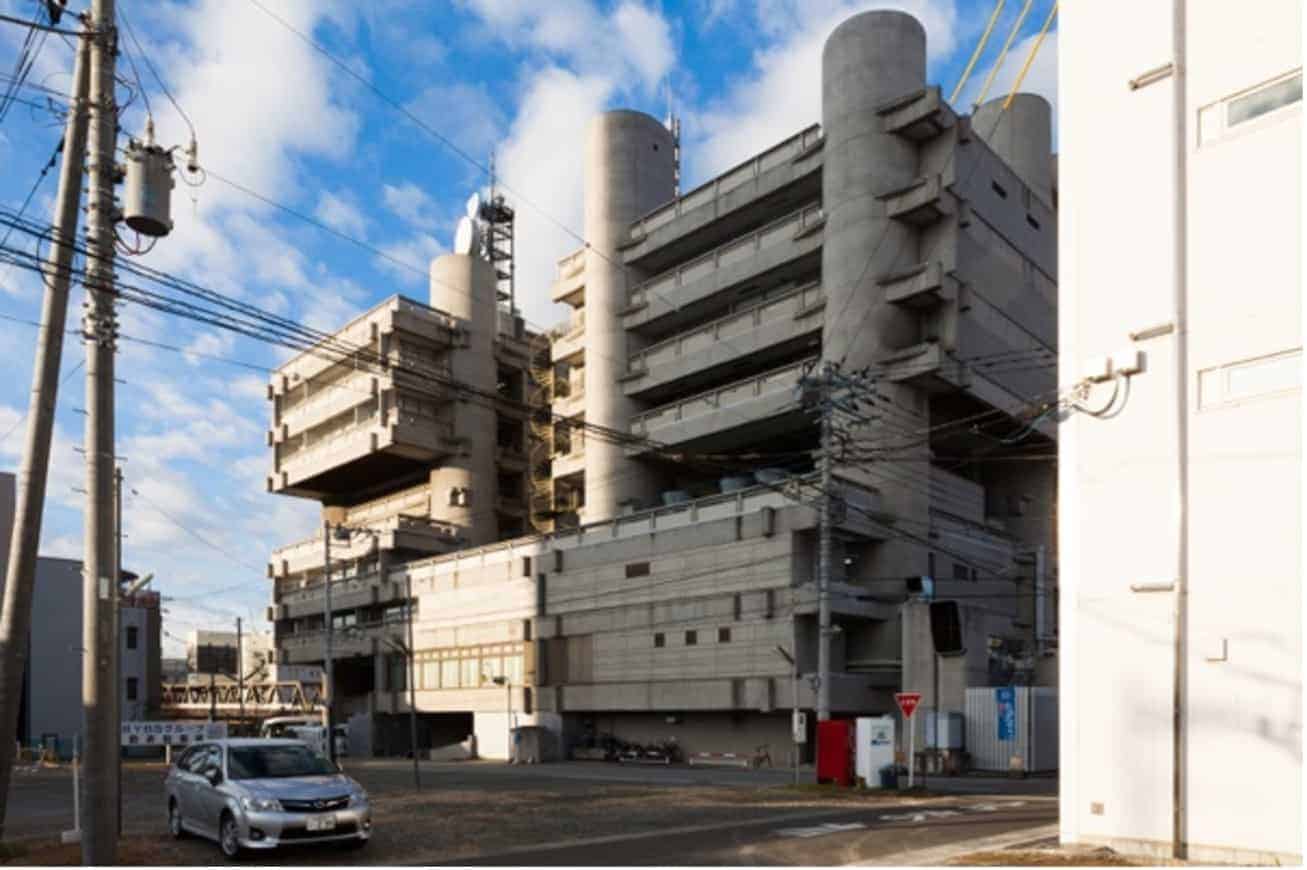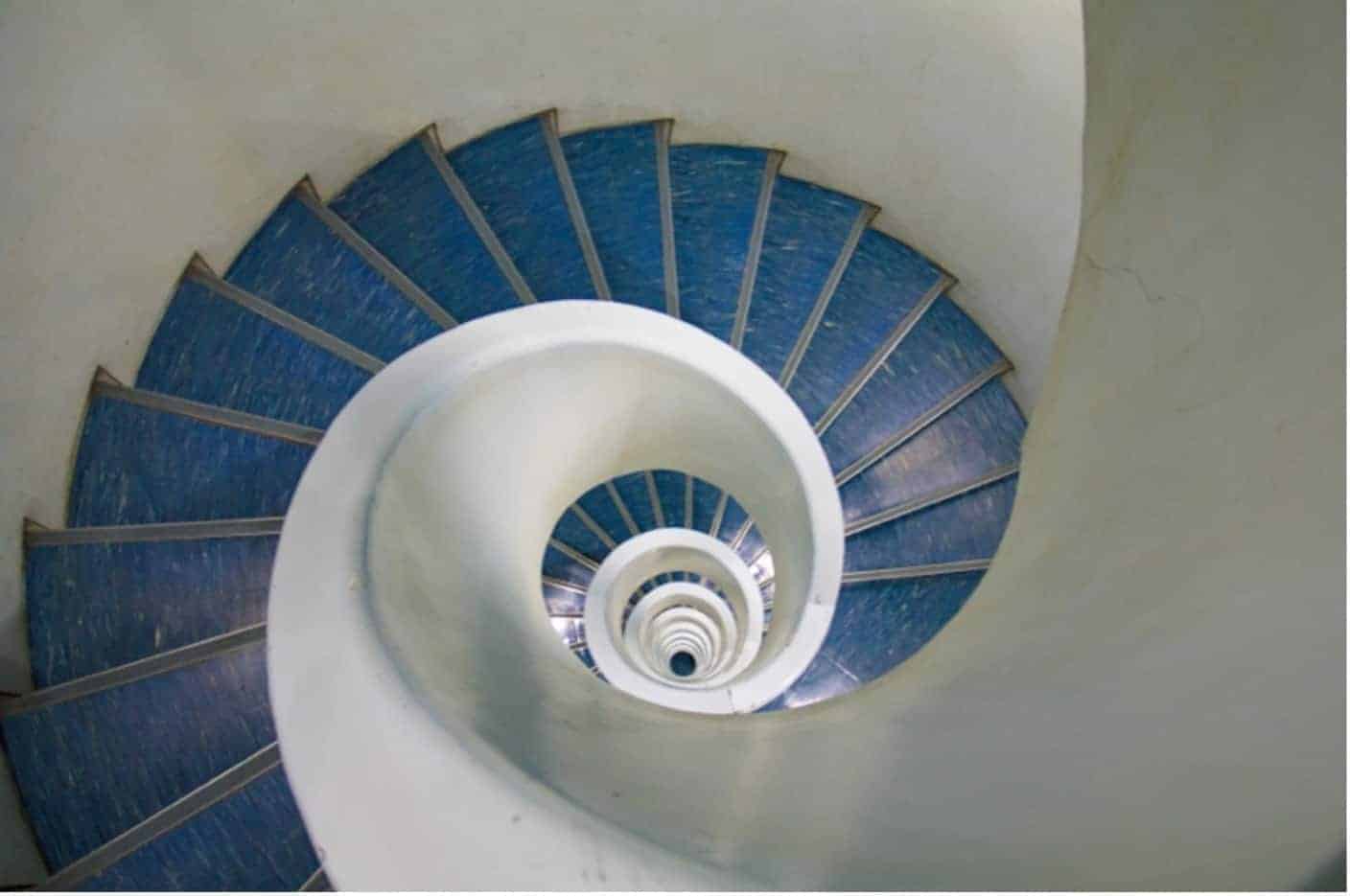Essay on Architecture: Yamanashi Center
-
Tamara Team
- November 28, 2022

Learning center
Essay on Architecture: Yamanashi Center
Essay on Architecture: Introduction
Art is a collective process that influences cultures, and cultures and politics influence it. Specifically, one can find relations between upstream and downstream artists of specific art movements. After all, art and architecture concentrate on improving art movements in terms of innovations, forms, style, and structures. For instance, the modernism movement was built on several principles that included to bring innovations to the concept of art. This paper focuses on Yamanashi Broadcasting and Press Center, and it examines YBPC’s cultural and political influences from the global concept. This paper's primary goal is to question how modern architecture shapes the culture and politics in a specific historical and geographic context. Since YBPC building is one of the Metabolism movement representatives, one should concentrate on which influences help Metabolism manifest its principles and how the Metabolism shaped the cultural and political concepts. This paper's secondary goal is to examine YBPC's relations to cultural, political impacts and relations and investigate specific art movements that influenced Japonise Metabolism in architecture.
Body paragraphs
At the beginning of the 20th century; art history already included many art movements. These art movements influenced one and another, and each movement had its principles and disciplines. Most of the time, the downstream art movement influenced the next generations, creating new art movements. Eventually, art and architecture became a collective process, and it became highly related to cultural and political influences for each society. Each geography has its cultural traditions and political influences. Therefore, when a new art movement was created, it spread worldwide, and each culture created its interpretation of the art movements.
Modernism's trademarks spread worldwide, and each culture created its interpretation of modernist art and architecture. At the beginning of the 20th century, there were different versions of modern art. For instance, there were symbolism, futurism, dadaism, surrealism, and existentialism. Metabolism appeared as the last of modern arts. In this sense, it was not created to influence the next generation of modern art, and it started the last architectural movement of the modern era.
One can suggest that modern individuals and modern politics influence modern architecture. Specifically, modern architecture's primary goal was to reflect modern society and individuals in it. In this direction, it influenced many cultures worldwide. With the industrialization, modern architecture affected politics because urbanization was an important concept that each country created its political interpretation for modern architecture. For instance, the Metabolist architecture was supported by political forces because it aimed at sustainable architecture for Japan. Eventually, Metabolism accomplished transformation from urbanization to megastructures. Japan's significant cultural change appeared with the urbanization in architecture because the Metabolist structures created a city plan for modern Japanese society.
More specifically, Japanese architecture evaluated and criticized Western architecture and then created their architectural movement in the mid 20th century. Also, Japanese interpretation of modern architecture improved the modernist approach and created a new concept for modern architecture. Just before the post-modernism movement started, Japanese architecture embraced the Metabolism movement and nationality. The biggest problem in the modernist movement was that it did not include nationality and tradition; it only concerned bringing innovations to architecture and art. Therefore, the Metabolist approach brought a new basis to modern architecture with nationality.
Japanise Modern Architecture
In the 1930s, Hideto Kishida (the mentor of Kenzo Tange) Japan's impresario selected La Corbusier, and Kishida selected a group that included Tange to backed up their activities (Lin et al., 2010). Before Tange was involved in La Corbusier, Junzo Sakakura had already studied in La Corbusier in Paris. Also, Junzo Sakakura searched for a new model that could reinterpret traditional Japanese architecture through a modernism perspective. Kenzo Tange's ideas shaped around Sakakura's basis, and eventually, he responded to this new model.
During the II. WW, Tange's ideas about traditional Japanese architecture were shaped. However, during this period, almost all modernist works had stopped all around the world. Specifically, this period allowed Tange to improve his perspective on modernist architecture. Also, at the beginning of the 20th century, Western countries had already started to urbanization the cities in Europe. During this period, the social environment and society's fundamentals were changing, and with this change, modern architecture in Japan allowed architects to create modern buildings that represented the modern individuals.
Japanizilation started around this time, and with the growing economy, political and cultural influences pushed artists to be part of modern architecture and urbanization. Many Japanese architects were involved in the La Corbusier atelier in Paris. According to research conducted on mutual halo effects in cultural production: the care of modernist architecture showed that artists involved in the modernist movement created a halo effect on other artists ("Mutual Halo Effects," 1988). Specifically, this research found relations between artists who were citizens of different countries. The artists' prestige was a critical variable in this research because artists who have prestige influence higher numbers of groups. Eventually, this created a mutual halo effect for modernist architecture.
This research showed that modern architecture shapes the countries' cultural and political backgrounds involved in modernist architecture. Specifically, modernism declined the old traditions of architecture and aimed to create innovative brand new buildings for modern individuals. Also, growing economies and populations in different countries shaped the cultural and political aspects of modern architecture. This relation between modern architecture and cultural, political aspects simply showed that one could not separate architecture and cultural influences. There was no Japanese artist in this research, and there were no bonds between other countries and Japan. However and arguably, Japanese architects who studied at La Corbusier primarily affected other Japanese artists, and they created an internal halo effect for the Metabolism movement. After all, high prestige Japanese architects were part of La Corbusier atelier in Paris. One can suggest that they affected a higher number of Japanese architects.
Japanese architects who studied in La Corbusier searched for a new model through modernist perspective and principles. Pre-war social and political influences affected artists' perspective on modern architecture and Post-war effects, leading them to manifest Metabolism in architecture. Specifically, post-war reconstruction was a critical process for Japan's transformation. In several ways, Japan needed to express its strengths. Kenzo Tange’s approach to Metabolism changed the principles of modern architecture in Japan. Specifically, he aimed to create structuralist buildings because many artists in the 20th century used functionalism as their primary goal. His approach changed the functionalist buildings to structuralist ones. Therefore structuralism became the core element of his approach in Metabolism. Also, the concept of urban structures had already been at the center of political influences at the beginning of the 20th century, and Japanilization had already brought out the transformation of the urban city. Political influences focused on the urbanization of Japan.
Urbanization was one of the main concerns of Japanese architecture. How to plan urban architecture was the primary goal of pre-war studies for Tange and other Japanese architects. After all, Western countries had already improved downstream artists' works, and they were embracing an innovative approach to modern architecture. More specifically, Western countries had been influenced by the industrial revolution. Industrial society greatly influenced modernist architecture and art because nations and societies rapidly started to change. Populations were growing, and individuals were changing. In this sense, Western countries' growing economies allowed the artist to create and design urban cities at the beginning of the 20th century.
If the II. WW had not started, Japan could have started to plan urban cities in the 1940s. Still, the II. WW stopped all modernist activities worldwide, and Japanise artists were been affected by II. WW more than Western countries. After all, II. WW brought serious outcomes to Japan and Japanese artist. Therefore, post-war influences were the cornerstone of modern Japanese architecture. Pre-war Japanise architects questioned several aspects of modern architecture and society. For instance, they questioned and compared concepts that were the main problems in the new Japanise architecture model. Therefore they compared modernism versus nationalism and modern versus traditions. Eventually, they developed and manifested a new movement that met the nationalist and structuralist approach. Utopic visionary designs were the core element of this movement, and Japanizetion and post-war effects influenced it.
One can infer that modern Japanise architecture shaped Japanese society's cultural and political aspects. More specifically, Kenzo Tange was a member of CIAM, and Japanese politics decided that there should be urban city planning and Tange’s Metabolist approach was in the center of urban city planning. Therefore he planned and designed many buildings in urban visionary city planning that included Yamanashi Broadcasting and Press Center building. In the last meeting of CIAM in 1959, Tange was asked to present "a project which he considered to express in the best way possible his conception of the task of the architect and urbanist, and his thoughts on how the architect and urbanist might rationalize and harmonize the connections between people and their surroundings" (Lin, 2017). Eventually, he presented the Tokyo Bay Plan, which was the first reveal of the Metabolist group’s work, and six years later, Tange started to work on the YBPC building.
Metabolism Movement
In the 1950s-1960s, Japan was facing a radical attempt to develop modern architecture. Japanization allowed architects to question the fundamentals of modern design, form, and structure. Also, Japan's growing economy enabled urban city planning and megastructures. In other words, in the 1950s, Japan entered a period in which economic growth began born out of the condition of a stabilized policy of the welfare nation called the "1955 system," which seeks out the growth as possible (Lin et al., 2010). Despite the emergence of new building regulations, sustainable architecture is seldom discussed as a possible driver of greater systemic change, requiring a radical rethinking of mainstream economics, consumption patterns, and sustainable lifestyles (Schalk, n.d.).
The metabolism movement questioned the dialectics of avant-garde. This discussion continued until the 1930s; avant-garde questioned the nature of design, form, and style. In the 1930s, both Japanese and Western artists studied avant-garde because of the center of modernism, guided by the avant-garde. Japanese artists improved modern architecture by manifesting the Metabolist movement. The Metabolist movement sought out sustainable architecture for modern Japanise society. The Metabolism questioned several relationships between urbanization and architecture. For instance, it questioned How should architecture as well as cities adapt to the ever-changing environment? What role should architecture play in provide lands accommodating the growing society and its population? If cities are the architectural interpretation of human society, then what are buildings? Are they structures that shape our living, or are they macro images of individuals that develop themselves along with society's growth?
In answering the growing acute problems revealed in the rapid post-war reconstruction, the Metabolist advocators sought a more utopian way to redefine Japanese national identity. Therefore, the Metabolist movement brought a new concept that embraced the visionary urban planning. Also, cultural resilience was one of the main concepts of the Metabolist movement. Specifically, Metabolism believed that architecture should be seen as alive, rather than simply dwelling machines. The new architectural form had to be able to grow like life to expand itself along with the organic growth of the society.
Urban city planning brought the self-organizing resilience concept to the Metabolism movement. The key aspect of a self-organizing, resilient city concept required developing applicable design approaches in city planning to formulate an organizational (cyclical) adaptation towards developing the contemporary city (Eken et al., n.d.). Tange and other Japanese artists were pioneers of urban visionary city planning. After all, urban city planning led to creating a megastructure associated with Japan.
One can infer that visionary utopic projects were launched at the beginning of the 20th century in Western cities. Also, in Europe, utopic ideas came into literature since the Renaissance, and Western countries had already been familiar with utopic ideas. However, visionary utopic projects appeared in Japan during the 1950s-1960s and manifested the Metabolism movement in CIAM meeting. They announced that architecture and the city should not be conceived as permanent. Still, architects and the urban planners should design the city and the building in such ways to remain open to the process of growth, decline, and transformation (Gardner, n.d.). Therefore, Japanese modern architecture was transforming to urban cities that led artists to create megastructures in Japan.
The post-war reconstruction process was different in Japan, unlike in Western countries, and it started a transformation that represented rebirth. Also, the Metabolism was highly related to Japan’s “golden 20 years,” which includes the economic boom, post-war reconstruction, the growing population of the middle class, the urgent needs for urban expansion versus the limitation on land use, the environmental crisis behind rapid industrialization, plus the cultural and political tension between authority and citizen agency.
Yamanashi Broadcasting and Press Center Analysis
YBPC building was designed by Kenzo Tange in 1966. It represented Tange's architectural signature that included his structuralist approach. Also, Tange was influenced by major innovations in technology, social life, and culture. Specifically, Tange developed his ideas in this Project for further expandable urban forms. YBPC was designed for three media companies: a newspaper printing plant, a radio station, and a television studio ("Yamanashi Broadcasting," 2020). For each function, Tange created three different sections: offices for a radio station, television studio, and newspaper printing offices.
Structural analysis of YBPC included the spatial relationship between buildings' parts and the whole structure. One can highlight that building structure includes vertical cylinders and functional units. Specifically, there are 16 vertical cylinders that form a grid, where all the functional rooms were inserted in this grid. These inserted containers are thus totally independent of the main structure.
Figure 1. Yamanashi Broadcasting and Press Centre, Kofu

The cylinders are designed to support the whole building. The empty spaces at the top of the cylinders indicate the possibilities to develop the building vertically. The building's design adapts spatial resilience and indicates further developments and possible growth. Also, functional units of the building stay in a linear perspective. More specifically, the YBPC building represents Tange's architectural perspective. For instance, most parts of the YBPC building intentionally left asymmetric, and cylinder heights are not the same. This indicates that the building is not finished and open to further developments from both linear and vertical perspectives. In other words, the YBPC building is ready for the possible improvements that could be made. Therefore, it is completed, but not in its ultimately developed form. The rooms' distribution is in a clear pattern but not strictly uniformed; some unite in front of others, and some units shrink in a little. There is a balanced space between some parts. These variables reflect the idea of flexible, customized, undeveloped, and adaptable building. In this sense, one can suggest that YBPC's unfinished look represents the growing society in Japan. Also, the YBPC building is an attempt at megastructure and brutalism.
YBPC’ dimensions and materiality indicates that this megastructure is inserted on rails. For instance, each section looks like a major human scale, and each floor, dimension, and section is independent and spatially connected to another dimension. After all, the YBPC building is a composition of towers and surfaces. Also, the YBPC building is highly related to the Tange structuralist approach because the building's functionality is ignored. In other words, functional units are connected to each other, but they are not based on a functionalist approach.
The primary concern of the YBPC building structure is to represent resilience through each section and cylinders. The independence of the building indicates the possible new improvements to the building. One can highlight that the Metabolism impacts are represented in the YBPC building. For instance, the building's interior elements are created in a unique way that the walls remain unadorned, and the construction material is exposed in its original way.
Figure 2. Yamanashi Broadcasting and Press Centre, Kofu

In the building, the stairs' internal design is piled in a spiral way that minimizes the space waste. The spiral shape within straight verticals provides a sense of infinity related to the Metabolist idea of structure's infinite expansion. Also, along with the other 15 cylinders, they transform the separated horizontal space into continuity in the vertical dimension. YBPC building design clearly shows the megastructure's cultural influences because it represents the Japanese culture and society. Specifically, the building is adequate for the growing economy and society.
Essay on Architecture: Conclusion
To sum up, this paper analyzed the historical and geographical impacts on Yamanashi Broadcasting and Press Center. The primary goal of this paper searched for the impacts of social and political influences on modern architecture. For doing so, it evaluates certain historical and geographical contents step by step. Eventually, this paper centered the Metabolism architecture in Japan because the YBPC building is one the representative of the Metabolism movement. Also, this paper criticizes the historical, social, and political influences on modern Japanese architecture. Therefore, this paper aimed to provide a clear understanding of modern Japanese architecture from global content.
References
Abbott, A., S. Anderson, CL. Ansell, M. Bacon, R. Banham, AH. Barr, L. Benevolo, et al. “Mutual Halo Effects in Cultural Production: the Case of Modernist Architecture.” Theory and Society. Springer Netherlands, January 1, 1988.
Eken, Cemaliye, and Resmiye Alpar Atun. “The Self-Organizing City and the Architecture of Metabolism: An Architectural Critique on Urban Growth and Reorganization.” MDPI. Multidisciplinary Digital Publishing Institute, September 26, 2019.
Gardner, William O. The Metabolist Imagination Visions of the City in Postwar Japanese Architecture and Science Fiction. Minneapolis: University of Minnesota Press, 2020.
Lin, Zhongjie, and Kenzo Tange. Kenzo Tange and the Metabolist Movement: Urban Utopias of Modern Japan. London: Routledge, 2010.
Lin, Zhongjie. “Plan for Tokyo: Kenzo Tange.” Wiley Online Library. American Cancer Society, March 28, 2017.
Schalk, Meike. “The Architecture of Metabolism. Inventing a Culture of Resilience.” MDPI. Multidisciplinary Digital Publishing Institute, June 13, 2014.
Tamari, Tomoko. “Metabolism: Utopian Urbanism and the Japanese Modern Architecture Movement - Tomoko Tamari, 2014.” SAGE Journals.
“Yamanashi Broadcasting and Press Centre." Architectural. Accessed December 14, 2020.
“Yamanashi Press and Broadcasting Center (Today: Yamanashi Cultural Center).”
Thank you for reading. If you need further information, feel free to have a look at our essay samples or contact us at live chat.
Contents
Recently on Tamara Blog

Essay on Animal Farm by Orwell – Free Essay Samples
“Animal Farm” by George Orwell is a literary masterpiece that tells the story of a group of farm animals who rebel against their human farmer and establish a socialist community based on the principles of equality and mutual respect (Orwell, 1945). However, over time, the pigs who lead the revolution gradually become corrupted by power and begin to oppress and exploit the other animals, ultimately turning the farm into a totalitarian state.

Essay on Cyberbullying – Free Essay Samples
Bullying is an aggressive behavior that is intentional and repeated, aimed at causing harm or discomfort to a person, and often takes place in social environments such as schools, workplaces, and online platforms. Cyberbullying is a relatively new form of bullying that has emerged with the widespread use of technology and the internet. Cyberbullying refers to bullying behaviors that occur online or through electronic means, such as social media, text messages, and emails.

Essay on Nature vs. Nurture – Free Essay Samples
The debate over nature versus nurture has been a longstanding topic of interest among psychologists and other scholars. The two concepts, nature and nurture, are frequently used to explain human development and behavior.

Lord of the Flies Essay – Free Essay Samples
Veterans have played a critical role in the history of the United States, serving their country in times of war and peace. Despite their sacrifices, many veterans face significant challenges, including physical and mental health issues, homelessness, and unemployment.

Why Veterans Are Important – Free Essay Samples
Veterans have played a critical role in the history of the United States, serving their country in times of war and peace. Despite their sacrifices, many veterans face significant challenges, including physical and mental health issues, homelessness, and unemployment.

Free Essay: To Kill a Mockingbird
“To Kill a Mockingbird” is a Pulitzer Prize-winning novel written by Harper Lee in 1960. The story is set in the fictional town of Maycomb, Alabama, during the Great Depression, and is narrated by Scout Finch, a young girl who grows up in the town with her brother Jem and father Atticus. The novel explores themes of racism, prejudice, and injustice through the trial of Tom Robinson, a black man accused of raping a white woman, and the subsequent events that follow.